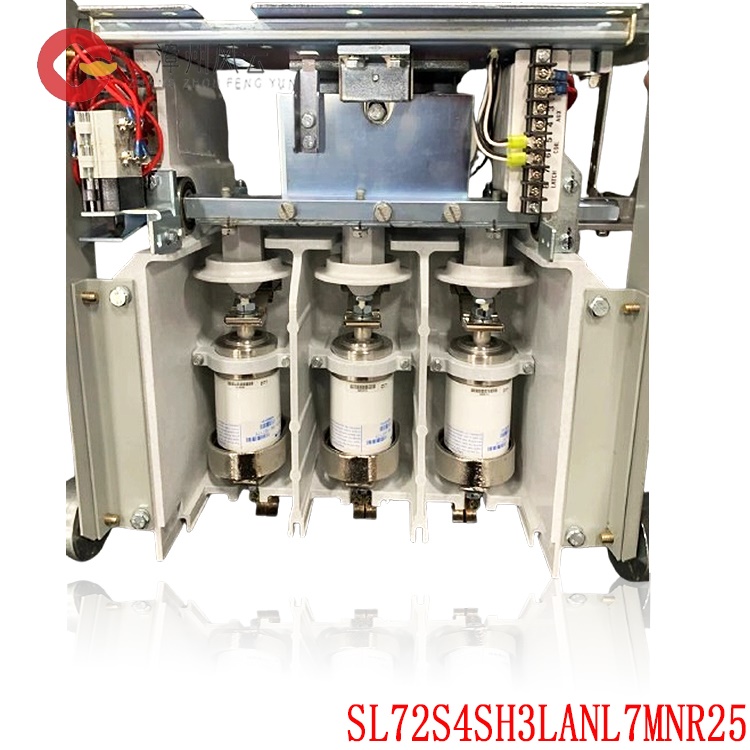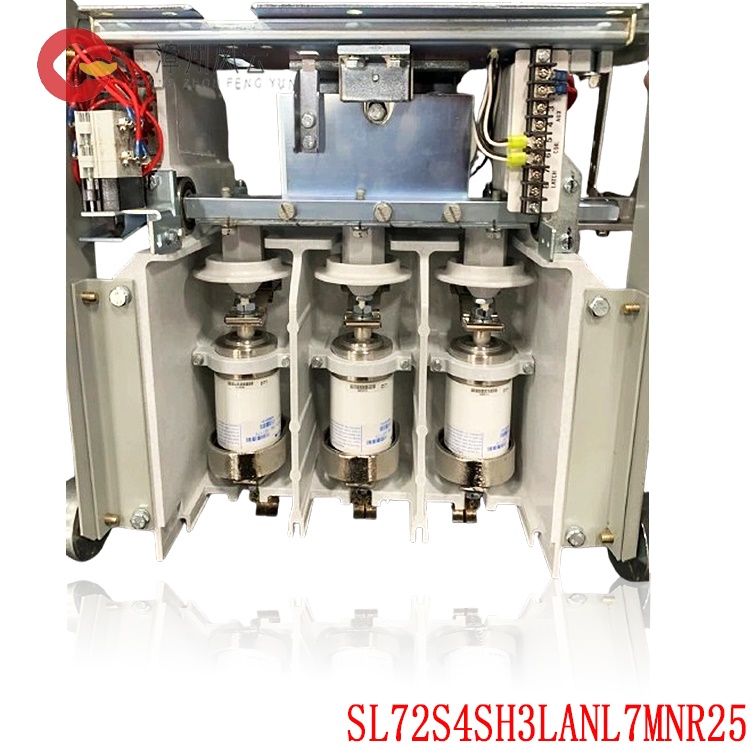.jpg)
.jpg)
.jpg)

.jpg)
.jpg)
.jpg)

Vacuum is used as the arc extinguishing medium. When the circuit is disconnected, the arc is quickly extinguished in the vacuum, and problems such as arc reignition and overvoltage will not occur. The breaking capacity is extremely strong and can reliably disconnect short-circuit current. The vacuum medium has good insulation properties, so the contact spacing of the contactor can be designed to be smaller, thereby reducing the volume and weight of the contactor.
Many products are not yet available. Please contact us for more information.
If the product model number differs from the displayed image, the model number will prevail. Please contact us for specific product images, and we will arrange to take photos at the warehouse for verification.
We have 76 shared warehouses worldwide, so it may sometimes take several hours to accurately return your product. Please understand. We will, of course, respond to your inquiries as soon as possible.
Other names for the SL72S4SH3LANL7MNR25:
SL72S4SH3LANL7MNR25 Bolt-on Reversing Contactor
SL72S4SH3LANL7MNR25 Plug-in Reversing Contactor
Product Overview
Brand and Model: Produced by Eaton, a world-renowned electrical solutions provider, the model number is SL72S4SH3LANL7MNR25.
Product Type: Vacuum contactor. It utilizes vacuum as an arc extinguishing and insulating medium. It offers advantages such as high breaking capacity, long life, and compact size. It is suitable for applications requiring frequent operation and reliable interruption.
.jpg)
Technical Features
Vacuum Arc Extinguishment Technology
Using vacuum as the arc-extinguishing medium, the arc is quickly extinguished in a vacuum during circuit interruption, preventing problems such as arc reignition and overvoltage. This provides extremely strong interrupting capacity and reliably interrupts short-circuit currents.
The excellent insulation properties of the vacuum medium allow for a smaller contact spacing, reducing the size and weight of the contactor.
Long Life and High Reliability
Vacuum contacts experience minimal wear during frequent operation and have a long mechanical and electrical lifespan, typically reaching hundreds of thousands or even millions of operations. This reduces maintenance and replacement frequency, lowering operating costs.
The contactor's rational structural design, utilizing high-quality materials and advanced manufacturing processes, offers excellent vibration and shock resistance, enabling stable operation in harsh industrial environments.
Intelligent Control Function (available on select models)
Some advanced models may be equipped with an intelligent control module, enabling remote monitoring, fault diagnosis, and protection of the contactor. For example, they can monitor contactor parameters such as contact status and coil current in real time, issuing prompt alarms and implementing appropriate protective measures when abnormal conditions occur.
.jpg)
Multiple Protection Functions
Featuring overload protection and short-circuit protection, they effectively protect circuits and equipment from damage. When an overload or short-circuit occurs, the contactor quickly disconnects the circuit and cuts off the fault current.
Frequent Operation Capability:
Vacuum contactors are suitable for applications requiring frequent operation, such as starting, stopping, and reversing motors.
They offer both long mechanical and electrical lifespans, meeting the demands of high-frequency operation.
Modular Design:
The modular design of the product facilitates installation, maintenance, and replacement.
Users can choose from a variety of module combinations based on their specific needs, achieving flexible configuration.
Safety Protection:
Vacuum contactors are typically equipped with safety features such as overload protection and short-circuit protection to ensure the safe operation of circuits and equipment.
Some models also feature undervoltage and overvoltage protection to enhance system reliability.
Application Scenarios
Power Industry
Used to control and protect electrical equipment in critical locations such as generator outlets and transformer circuits in power plants. It can reliably interrupt high currents, ensuring safe and stable operation of the power system.
.jpg)
In substations, it is used to control and switch transmission lines and distribution equipment, enabling flexible control and scheduling of the power system.
Industrial Automation
In various industrial production lines, such as those in the steel, chemical, and cement industries, it is used to control the start, stop, and forward and reverse rotation of motors. Its high-frequency operation capability meets the equipment control requirements of production lines and improves production efficiency.
In automated control systems, it serves as an actuator, receiving control signals to control the on/off state of circuits and collaborating with other automated equipment to complete complex production tasks.
New Energy Sector
In renewable energy power generation systems such as solar and wind power, it is used to control and protect equipment such as inverters and combiner boxes. It can adapt to the unique operating environments and requirements of renewable energy power generation systems, ensuring reliable system operation.
Maintenance and Troubleshooting
Daily Maintenance
Regularly inspect the contactor's exterior, clean any dust and debris from the contactor surface, and keep the contactor clean.
Check the contactor for contact wear. If severe wear is found, replace the contactor promptly.
Check the contactor's coil insulation. If insulation damage is found, replace the coil promptly.
Common Faults and Troubleshooting
Contacts not closing: This may be caused by a control circuit fault or coil damage. Check the control circuit for proper operation and measure the coil resistance to ensure it meets requirements. If the coil is damaged, replace it.
Contacts not opening: This may be caused by contact welding or mechanical jamming. Check for welded contacts; if so, replace the contacts. Check for mechanical jamming, clean them, and lubricate them.

Excessive contactor noise: This may be caused by oil stains or wear on the core pole surface or a broken short-circuit ring. Clean the core pole surface and repair or replace any worn core. Check for broken short-circuit rings and replace them if necessary.
All products on this website are special editions, and market prices are
constantly fluctuating.
Please refer to customer service for specific quotes. Since these products are new, prices are not accurate.
Please confirm model, product, price, and other details with customer service before placing an order. This website is used.
New items are currently for sale, so please contact customer service for details.
Related product recommendations:
PFCL201C 10KN 3BSE027070R10
PFCL201CE 10KN 3BSX105983-100
PFCL201CE 50KN 3BSX802939-108
PFEA111-20 3BSE028140R0020
PFEA111-65 3BSE050090R65
PFEA112-20 3BSE030369R0020
PFEA112-20 3BSE050091R20
PFEA112-65 3BSE050091R65
PFSA140RULLM1I 3BSE06503R1
PM150 3BSE003641R1
PM861K01 3BSE018105R1
PM866A 3BSE076359R1
PM891 3BSE053240R1
ABB 3BHE055094R0002
GBU72 3BHE055094R0002
ABB 3BHB030310R0001
ABB 3BHE031197R0001
ABB 3BHE055094R0002
GBU72 3BHE055094R0002 3BHB030310R0001
3BHE055094R0002 3BHE031197R0001
ABB 3BHB030310R0001
ABB 3BHE031197R0001
ABB 3BHE055094R0002
ABB 3BHB050206R0100
More......
Address
Room 205, Office Building, No.1 Chaoyang North Road, Longwen District, Zhangzhou City, Fujian Province
fengyunfadacai@qq.com
Sales consultant
Miss.Green
+86 15860249102
